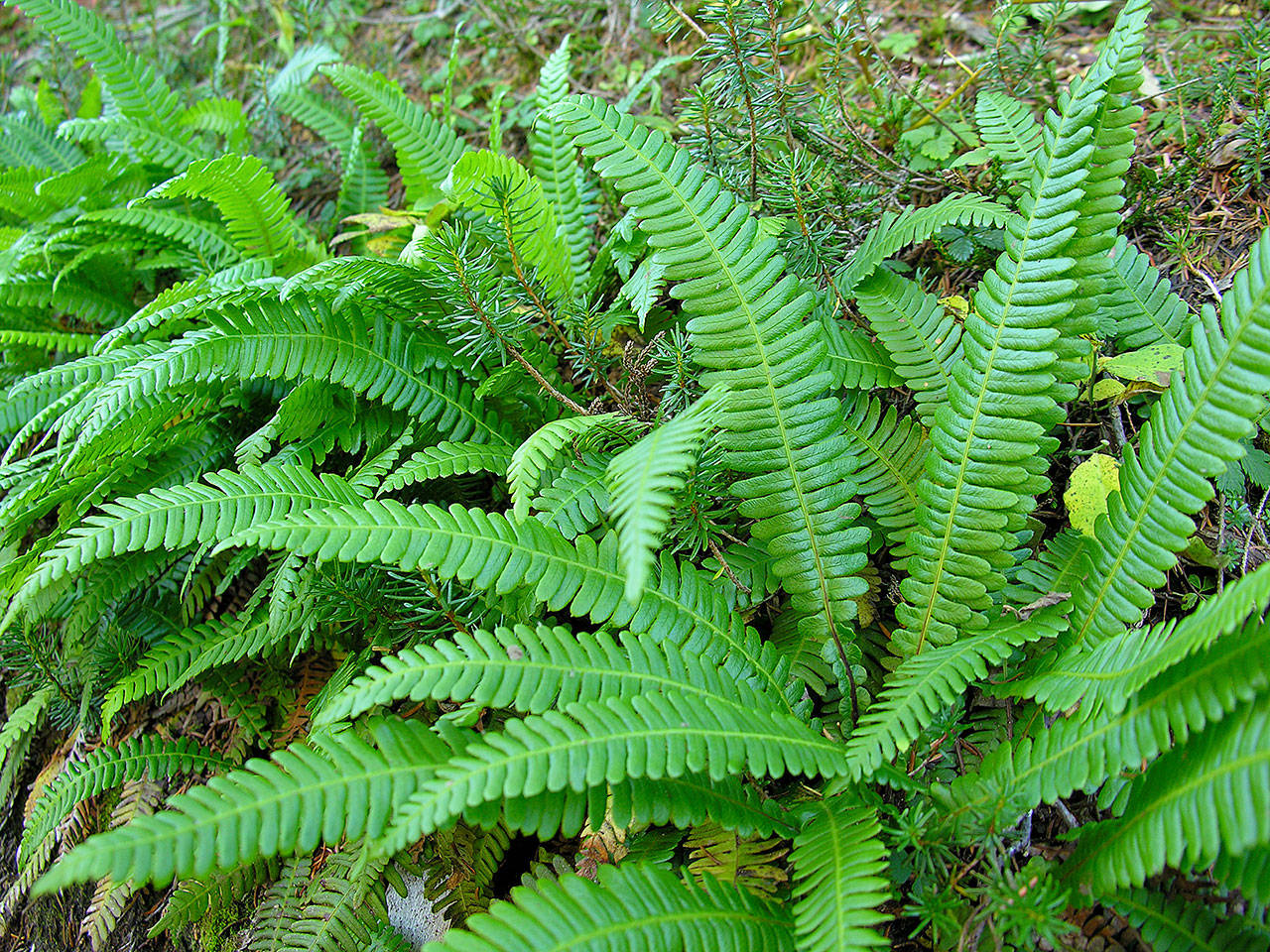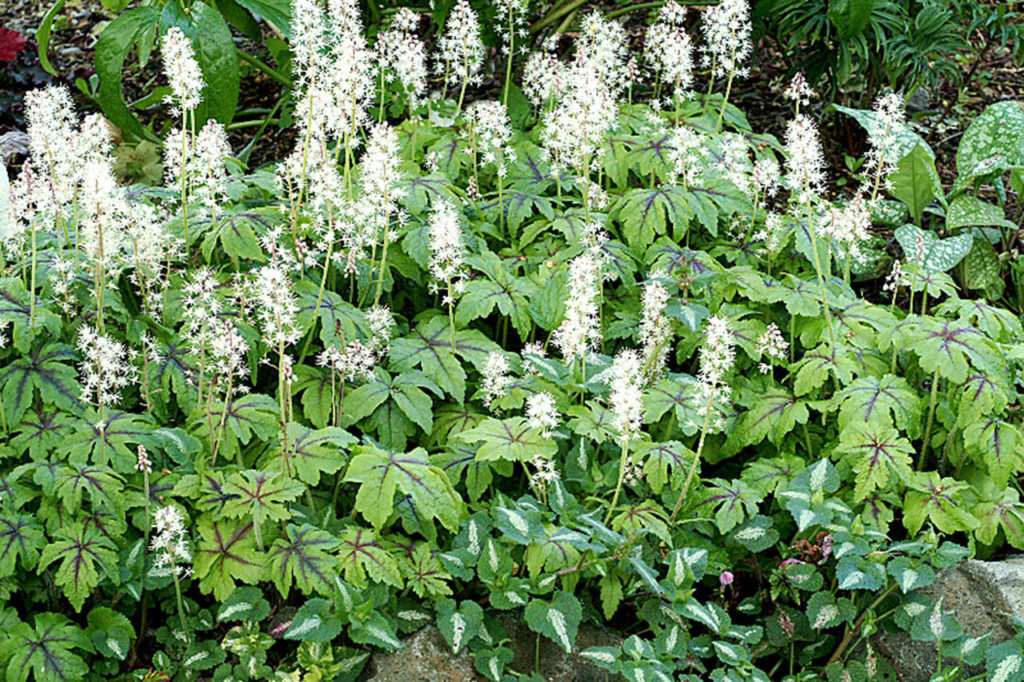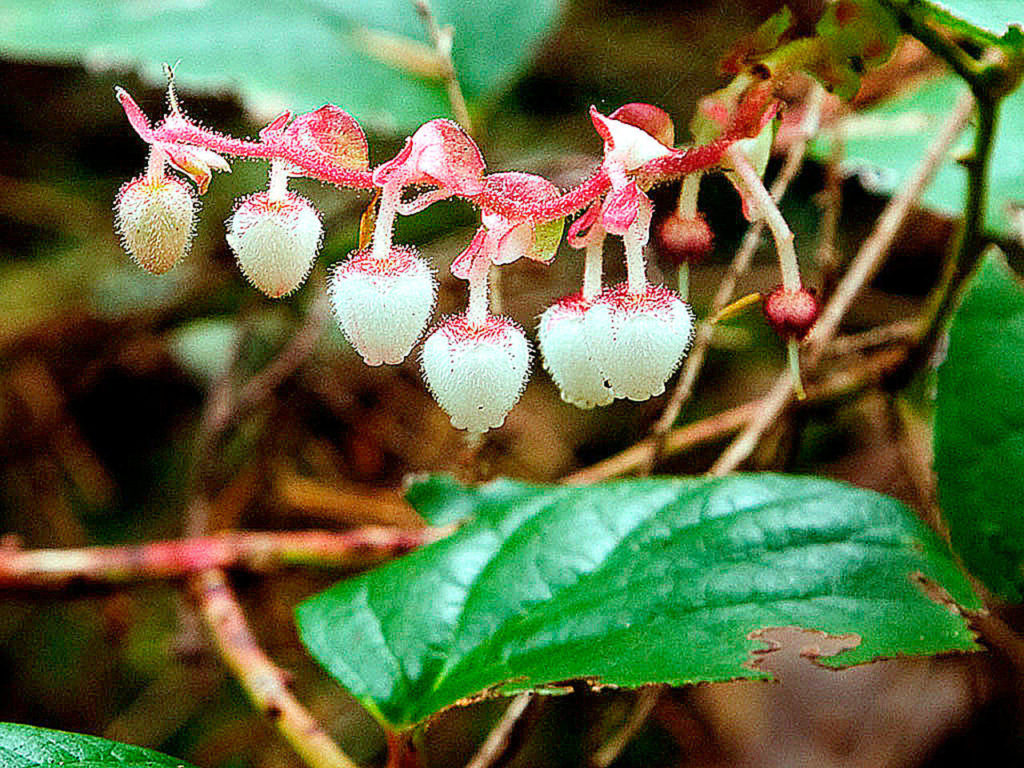Don’t give up on that seemingly uninhabitable part of the yard that’s shaded by towering evergreens.
With some creative planning, this tree-filled area can transform from a dark, neglected spot to an interesting, enjoyable garden feature — and a welcoming cool retreat on a hot summer day.
For inspiration to how to design a woodland garden, take a walk in one of our local forests.
There is an abundance of opportunities for this in Snohomish County. In Everett, Forest Park offers woodland trails that are a fern-lined delight. The canopy of evergreen trees provide a somewhat dry walking experience on a soggy winter day and a pleasantly shaded walk in the warmer months. Notice the interplay of the Northwest native ferns, salal and foamflower.
Many plants that are native to our local forests can be added to the urban yard. A winding path through a shaded area of your yard can be lined with woodland plants along either side.
Many varieties of ferns found in the forest can be a good choice for the home landscape.
Western sword fern (Polystichum munitum) is perhaps a signature plant of our forests. The long, leathery evergreen fronds provide a strong year-round presence. Once established, Western sword fern can be somewhat tolerant of dry conditions. This fern can get rather large, so give it room to grow. Plant this in groups or as a single focal point.
A smaller growing fern found along woodland ventures is the native deer fern (Blechnum spicant). Reaching heights of 8-20 inches, it has medium green, narrow evergreen fronds at the base and spiky upward-growing fronds that reach up from the center of the clump. This can be planted along a path, or in places that the Western sword fern would outgrow.
Ferns can also add seasonal color and seasonal interest. The oak fern (Gymnocarpium dryopteris) can be found growing in some local forests. With a height of 6-12 inches, its glorious golden yellow colors carpet the forest floor in fall.
A favorite fern for year-round color is Dryopteris erythrosa, commonly known as autumn fern. This eastern Asian native features bright coppery orange colors in spring. The fronds keep some of the golden green color year-round. Autumn fern creates a great pop of color among some of the darker green native plants.
Another fern with fabulous foliage color is known as the Japanese painted fern (Athyrium nipponicum dictum). This fern provides a delicate texture and is deciduous. The fronds have beautiful hues of reddish blue with silvery, metallic gray colors near the tips of the fronds. It looks like a paintbrush was flicked at the fern, randomly dotting each frond with a unique array of colorful splatters.
Add fragrance to your woodland garden with Polygonatum odoratum variegatum. The arching stems of this plant have leaves edged in creamy white. Fragrant bell-shaped flowers perfume the garden in spring through early summer. In fall, the leaves turn a light golden yellow, adding interest to this plant. With a common name of false Solomon’s seal, this plant will tolerate a variety of soil conditions and some drought once established. It grows to 2 feet tall and wide.
Our Western native bleeding heart (Dicentra formosa) has pale pink or rose-colored, heart-shaped flowers in spring on leafless stalks. Bleeding heart spreads by rhizomes and forms large colonies, filling up that bare corner with some bright colors. It’s graceful fern-like foliage adds a delicate presence. During winter, the foliage dies down to the ground. Bleeding heart is liked by hummingbirds, but reportedly not appealing to deer.
For architectural interest, plant a couple of Disporum flavens or Korean fairy bells. The glossy green leaves arch and have a flower at the tip. The bell-shaped yellow flowers appear in spring. You can almost hear the fairies singing! Fairy bells will tolerate part shade or some sun. The leaves die back in fall and can be cut to the ground.
Sprinkle in a few foamflower (Tiarella cordifolia) and enjoy their foamy white spring flowers. Add a hosta or two, or five — there are so many different varieties available.
For late summer color, plant astilbe. Astilbe arendessi “Fanal” offers foliage colors of burgundy in addition to its deep red summer flowers.
Add foreground interest to the woodland garden with these tiny treasures: Asaruam caudatum, our native wild ginger, is a prized woodland plant for its minuscule brownish flowers that hide under its heart-shaped evergreen leaf. The leaves give off a slightly ginger-like fragrance when crushed.
Most of the plants above will tolerate the partial shade under taller evergreens. These plants will need to be watered as the roots of the nearby evergreens, as the canopy overhead may limit available moisture. Enrich the soil if needed and mulch with well-aged compost.
Enjoy the beauty these reclaimed areas offer through a woodland garden.
Pam Roy of Planscapes is an award-winning landscape designer with over 35 years of experience Call 425-238-4678 or email info@planscapesdesign.com for more information. Or visit www.planscapesdesign.com.
Talk to us
> Give us your news tips.
> Send us a letter to the editor.
> More Herald contact information.



























